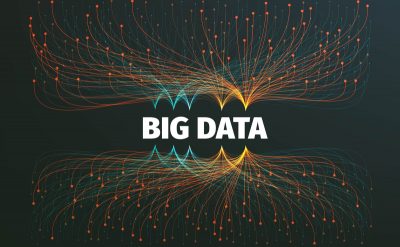Big data analytics is a tool for the benefit of all organizations. It harnesses their data and uses it for identifying new opportunities. When it gets leveraged into an organizational setup, one can be assured with more innovative business moves, more efficient operations, higher profits, and happier customers. However, the process isn’t easy; it involves data scientists, data engineers, business users, developers, and data management teams.
These professionals require doing a tedious job to attain success within the organization. Nevertheless, one thing can reduce data scientists’ and other users’ efforts to help produce positive results. It is the right set of features that works well for analytics projects and better business decisions.
1. Support for a different type of analytics
There are several ways of putting different big data analytics into production use, from BI (Business Intelligence) applications to predictive analytics, real-time analytics, machine learning, and other types of advanced analytics.
Every approach is different and renders an additional business value. The most important feature is that big data analytics tools are functional and flexible enough to support other use cases with the least effort.
2. Data wrangling and preparation
As you call them, data scientists or experts spend a lot of time in data cleaning, profiling, organizing, and transformation. All of these tasks consume a lot of effort, valuable money, and time to completion. Therefore, big data analytics tools must have a full spectrum of data types, protocols, and integration scenarios to speed up these data wrangling steps.
Hence, it must be equipped with the feature that renders data professionals with an organized data set in almost no time.
3. Exploration
There is a research and exploration phase that is frequently involved in big data analytics. Though it is a part of data preparation, exploration renders the benefits of better understanding the business context and formulating better analytics questions.
The robust data visualization capabilities are also essential, as they can help in data exploration. Wondering how? It is difficult for the data scientist to surface valuable insights about data without visualizing the data first.
In addition, they should make it easier to collaborate on a data set with colleagues. “Tools must support exploration and collaboration, enabling people of all skill levels to look rapidly at data from multiple perspectives,” said Andy Cotgreave, Technical Evangelist at BI and analytics vendor Tableau.
4. Management
Data management of all big data analytics tools is significant to ensure continuity and standardization across all the platforms. The reason is there can be a lot of inconsistencies and different formats that need to be harmonized. This data management feature can help enterprises maintain a single source of truth that will support the big data initiatives.
One good example of the data management feature is the push notification. The tools should be equipped with this feature so that it becomes easy to notify users about the stale data, ongoing maintenance, and changes required.
5. Security
Needless to say, big data analytics features designed with security features can address IT concerns related to data breaches while encouraging the right amount of data usage. It is significant to ensure building a data culture and stand as a data-driven organization.
It also puts control on sharing of personal information. And implementing data security means sharing data in the format that goes well with GDPR (General Data Protection Regulation), CCPA (California Consumer Privacy Act), and other privacy regulations.
6. Integration
When equipped with built-in connectors and development kits, the big data analytics tools can make the integration process much more manageable. Easy integration refers to smooth connectivity with existing databases, data warehouses, data applications, and data lakes – both on-premises and the cloud.
7. Scalability
Data scientists can develop and test different analytics models on small data sets for a long time. However, these developed analytics models should be capable of running economically and generate results quickly. It is required that big data analytics systems support high levels of scalability for ingesting data and ensure scalability for ingesting data.
In this case, it is significant to ensure the tool support working on large data sets within exorbitant hardware or cloud services costs.
8. Support business decisions
Big data analytics initiatives will get more credibility when the insights that appeared from analytics models will move forward for supporting business decisions. Also, these insights should come in a lucrative format that can be embedded directly for decision-making. It means the business users should apply them in a real-time data stream for driving in-the-moment decisions.
We emphasize a lot on big data analytics in our blogs. Why?
“Without big data analytics, companies are blind and deaf, wandering out onto the web like deer on a freeway.” (Geoffrey Moore, Author and Consultant)
Also, know for your benefit as a business user that,
“Big Data will spell the death of customer segmentation and force the marketer to understand each customer as an individual within 18 months or risk being left in the dust.” (Ginni Rometty, American Business Executive and Former CEO of IBM)
The term big data has been around the industry for more than 50 years. But its significance has come into the picture in just some recent years. Companies have started understanding that if they apply all their data streams into their businesses, they can apply analytics and get significant value.
When the companies started to implement the technology, the benefits were evident in its speed and efficiency. Only the features of big data analytics tools vary from tool to tool. This article presents you with some more sought-after features of big data analytics tools.
You can download the whitepaper for more information.







































































